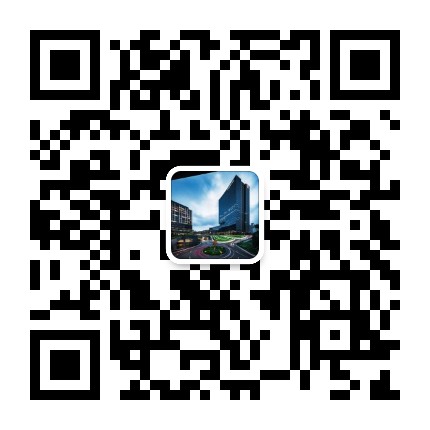
根据港交所的规定,发行人在提交IPO上市申请时必须证明其有足够的业务运作;即使在成功上市后,足够的业务运作仍须予以维持。但如何评估业务的充足水平?港交所在2024年1月修订了有关业务充足水平的指引,并举出几个反面案例供参考。
《主板上市规则》第13.24条规则和《GEM上市规则》第17.26条规则都要求发行人经营的业务须有足够的业务运作并拥有相当价值的资产支持其营运,其证券才得以继续上市。由于这要求是一个定性测试,规则并没有列明用以证明“足够”收入、利润、资产或现金流金额的标准。港交所会依每个案件的具体事实作评估。
反面案例
港交所在最新的指引更新中列载了几个没有满足足够业务运作要求的案例,具体如下:
•某上市公司的煤炭贸易业务收入仅维持在每年140万美元的水平,并只来自数名客户。该公司在几年前购入煤矿的采矿权,但因监管限制,一直未开始采煤业务。公司出现重大亏损,总资产为260万美元,负债净额达770万美元。而公司拟改善业务营运的计划没有实际资料支撑。
•某经营二手汽车零售业务的公司在过去五年收入跌近95%。公司出现净亏损,营运现金流呈负数,总资产为640万美元。公司拟停止这项业务,转向新品牌汽车的批发业务,但公司的汽车批发业务经营历史短,客户群有限。
•某GEM上市公司停止其收入占比高达90%的金属买卖业务。公司开展了多项互不相关的新业务,但业务量很低。公司过去六个月净亏损770万美元,负债净额达5,100万美元。
•某公司大幅缩减其原来的时尚饰品业务,并收购一家从事软件及应用程式开发业务的公司且开始相关业务。收购所产生的商誉占其总资产3,590万美元的一半。随后,整个软件开发团队离职,导致软件业务中断。审计师基于其对商誉帐面值能否恢复的担忧,出具了对公司财报无法发表意见的审计报告。
•某公司拟将其主营业务出售给控股股东,该控股股东再将其所持有该公司的全部股权出售给某投资者。但公司没能证明余下业务的可行性和可持续性。
•某公司拟出售营运其主要业务的附属公司的25%权益,并授予买方一项关于收购附属公司余下75%权益的认购权,但该认购权在出售事项24个月后方可行使。公司的业务和资产都主要由该附属公司营运和持有,买方一旦行使认购权,公司即不再持有任何实质的业务营运或资产。
•某公司拟出售占公司总收入和资产70%的建筑业务,而其去年收购或建立的新业务在最近一个财政年度只录得亏损或极少收入。
•某公司在收购一家顾问服务公司不到半年时间,提出出售其占据着公司的全部收入及纯利来源的包装业务。该顾问公司的收入在被收购不久前大增超过99%,而大部分增幅均来自同一个客户。
应用原则
如出现以下情形,港交所可能认定发行人没有足够的业务营运:
1.上市公司终止或大幅缩减其主营业务,或主营业务不断倒退,而余下业务不能产生足够的收入来应付营运成本,公司出现结构性而非暂时性的净亏损或负营运现金流。
2.另一方面,公司拟收购或开启新业务,但新业务营运历史短,不能证明其可行且可持续。
3.一些上市公司继续营运其主营业务只为维持其上市地位,而非真正为发展相关业务。令港交所怀疑发行人是否有实质业务的常见情形包括:业务进入/退出门槛极低、公司依赖数目不多的交易或客户。比如,从事借贷业务的发行人只有少数员工且客户高度集中;再如,从事订单贸易业务的发行人仅能提供有限的增值服务。
4.出现财政困难、破产或失去主要营运附属公司的发行人也可能不再拥有足够的业务营运,尤其在没有切实的扭转经营计划的情况下。
港交所的评估过程
在评估上市公司是否有足够业务运作时,港交所一般会考虑其业务模式、业务性质、营运规模、过往业绩和新业务、资产构成,以及上市公司是否有转让控股权益的提议等因素。
但港交所旗下负责上市决定的团队所作出的决定可能会被其上市委员会或上市复核委员会推翻。比如,中基长寿科学集团就在2022年7月25日宣布上市复核委员会推翻了上市委员会的决定,后者此前确认了港交所作出的公司不再维持足够业务运作的评估结果。但随后,上市复核委员会认为公司的借贷业务可持续,符合足够的业务运作要求。
本篇文章仅是对有关题目提供的一般概述,并非旨在成为可依赖的专业意见。请联系我们获取进一步的具体法律意见。
SEHK’s guidance on sufficiency of operations
A company must showcase its business operations at the time of an IPO, but even after a successful listing it is still required to maintain sufficient operations. The Stock Exchange of Hong Kong (SEHK) issued its revised guidance, in January 2024, on the principles in assessing sufficiency of operations and gave examples of failure to comply with that requirement.
Rule 13.24 of the Main Board Listing Rules and rule 17.26 of the GEM Listing Rules require a listed company to carry out a business with a sufficient level of operations, and assets of sufficient value, to support its operations in order to warrant the continued listing of its securities. This is a qualitative test, as the rule does not set out any numerical standard of revenue, profit, assets or cashflow to prove “sufficiency”. The SEHK makes assessments based on the specific facts in each case.
Negative examples
The following paragraphs have depicted several examples where the company has failed to satisfy the operation sufficiency requirement:
•A listed company maintained only coal trading with annual revenue of USD1.4 million from a few customers. It had acquired coal mine rights but was prohibited from commencing exploration due to regulatory restrictions. It incurred losses, and had total assets of USD2.6 million and net liabilities of USD7.7 million. Plans to improve business operations lacked details.
•A company engaged in retail sales of second-hand motor vehicles saw its revenue drop by 95% in the past five years. It recorded net losses and negative operating cashflows, with total assets amounting to USD6.4 million. It would cease that business and start wholesale distribution of new branded motor vehicles. However, the company’s wholesale business had a short operating history and limited customer base.
•A GEM-listed company ceased its metal trading business, which accounted for 90% of its revenue. It started a number of new businesses with no correlation with one another, and that involved few activities. The company incurred a net loss of USD7.7 million in the past six months and had net liabilities amounting to USD51 million.
•Having substantially scaled down its original fashion accessories business, a company started a new business via acquisition of a company engaging in software and applications development. Goodwill arising from the acquisition accounted for half of its total assets of USD35.9 million. Subsequently, the entire software development team left the company, resulting in suspension of the new business. The auditor issued a disclaimer of opinion on its financial statements due to concerns over the recoverability of the goodwill.
•A company proposed to dispose of its major business to its controlling shareholder, who would in turn sell his entire stake in the company to an investor. The company failed to demonstrate that the remaining businesses were viable and sustainable.
•A company proposed to sell a 25% interest in its main operating company, and granted an option to the purchaser to acquire the remaining 75% interest 24 months later. As the company’s business operations and assets were primarily carried out and held through the operating company, it would not have any material business operations or assets left once the purchaser exercised its option.
•A company proposed to dispose of its construction sector, which accounted for 70% of its revenue and assets. Its other businesses that were acquired or established within the past year had recorded either a loss or minimal profit in the latest financial year.
•A company acquired an advisory services company, then in less than six months proposed to sell off its packaging sector, which has been accounting for its entire revenue and net profit. The revenue of the advisory services company increased by more than 99% shortly before the acquisition and most of the increase came from one client.
Principles of application
The SEHK is more likely to consider the following circumstances as not having sufficient operations:
1.The core business of the listed company is discontinued, substantially scaled down or deteriorated. The remaining businesses do not generate enough revenue to offset operating costs, resulting in net losses and negative operating cashflow on a structural, rather than temporary, basis.
2.The company proposes to acquire or start a new business with only a short operating history to demonstrate its viability and sustainability.
3.Some listed companies carry on their main operating activities merely to maintain the listing status, rather than genuinely developing such business. Common telltale signs include low barrier of entry/exit and limited number of transactions or customers. These can refer to money lending businesses with only a few employees and high concentration of customers, or trading activities that add little to no value to the company.
4.Companies in financial difficulty, becoming insolvent, or losing their major operating subsidiaries may cease to have sufficient operations, especially in the absence of concrete turnaround plans.
SEHK assessment process
In assessing whether a listed company has sufficient operations, the SEHK will consider factors such as its business model, business nature, operating scale, history of existing and new businesses, asset composition, and whether any transfer of controlling stake is proposed.
Nevertheless, a decision of the SEHK’s listing division may be overturned by its listing committee or the listing review committee.
Zhong Ji Longevity Science Group announced, on 25 July 2022, that the listing review committee overturned the listing committee’s decision, which had confirmed the listing division’s assessment that the company failed to maintain a sufficient level of operations. The listing review committee concluded that the company’s money lending business was sustainable and fulfilled the operations sufficiency requirement.
This material has been prepared for general informational purposes only and is not intended to be relied upon as professional advice. Please refer to your advisors for specific advice.
© 2019-2021 All rights reserved. 北京转创国际管理咨询有限公司 京ICP备19055770号-1
Beijing TransVenture International Management Consulting Co., Ltd.
地址:北京市大兴区新源大街25号院恒大未来城7号楼1102室
北京市丰台区南四环西路128号诺德中心2号楼5层
北京市海淀区西禅寺(华北项目部)
江苏省无锡市滨湖区蠡溪路859号2131室
深圳市南山区高新科技园南区R2-B栋4楼12室
深圳市福田区华能大厦
佛山顺德区北滘工业大道云创空间
汕头市龙湖区泰星路9号壹品湾三区
长沙市芙蓉区韶山北路139号文化大厦
梅州市丰顺县大润发大厦

欢迎来到本网站,请问有什么可以帮您?
稍后再说 现在咨询